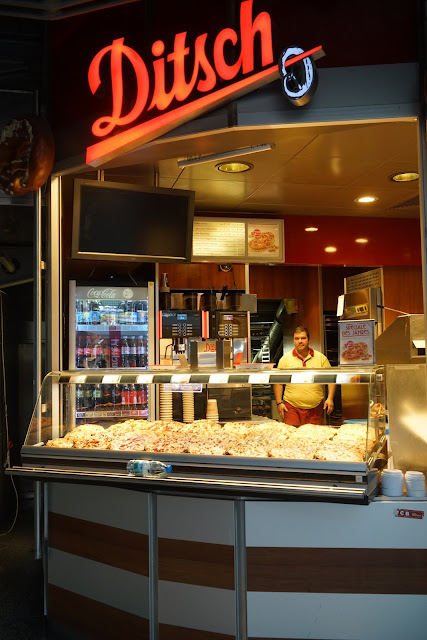I had long heard about Heidelberg University in my studies. I know that
it is the oldest university in Germany (established in 1386!) and the 5th oldest in Central Europe and that it's situated in a very picturesque part of Germany So, maybe I could kill two birds with one stone and pay it a visit. But first, I got to go to the train station.
This is the Hauptbhnhof (Main Station), Munich's central railway
station, one of the three in the city for long distance train (the other
two being München-Pasing and München Ost. ) and handles some 450,000
passengers a day. It's a station first built in 1839 and first opened at the current site in 1849 and has since been
rebuilt a number of times, the last being in 1987 and now has 32 platforms.
It is also served by the underground S-Bahn ( for both urban and suburbs) with 2 platforms and U-Bahn (for the urban districts)
stations with 6 platforms. And a second S-bahn station has been planned to be in operation in 2020.
Its metal and glass canopy
The station from another angle
Its metal and glass canopy
Tickets machines with instructions in German, French, Italian, Spanish and English but no Chinese or Japanese

There are also cigarettes vending machines although smoking is prohibited on trains and inside the railway station.
A fast food booth outside one of its entrances: as smoking is prohibited inside the station, smokers are forced to step out for the puff they are dying to have.
This is where I had my breakfast after booking the tickets

A German bun with ham and a cup of coffee
The station has half a dozen fast food stalls like this.

selling all kinds of sandwiches
from stalls like this
or chain bread and pastry stalls like this: the place of honor being given to pretzel, placed on the top shelf. In Germany, bread is more than just a food; it's a culture. Believe it or not, the Germans have more than 300 types of bread and more than 1,200 varieties of rolls and mini-breads called "bröchen" and "kleingebäck eaten with hard-bioled eggs, different kinds of cheese, sausages or salads which are normally eaten in the morning. But they eat bread not only for breakfast but also as part of their normally light dinner because they believe in a heavy lunch. There are special breads for festivals and other celebrations. At festivals, the most common bread is 'pretzel", the manner of preparation of which was, I later learned, the result of an accident. According to the standard story, a baker who intended to make sweet bread accidentally mistook the sodium hydroxide normally used for washing the baking pans, for sugar powders and as a result , when baked, the inside of the bread turned out to be much softer than its stiff exterior!
with or without stuffings
Crumbles
And spare ribs
a very down to earth, fancy free "take-away"
There's also a restaurant for those who prefer to sit down in front of properly laid own table for their meals
some with stuffings
others much plainer in all kinds of colors and flavors
and pop corns
roasted cashew nuts
and fruits from all over the world
workers in a food trolley











































沒有留言:
張貼留言